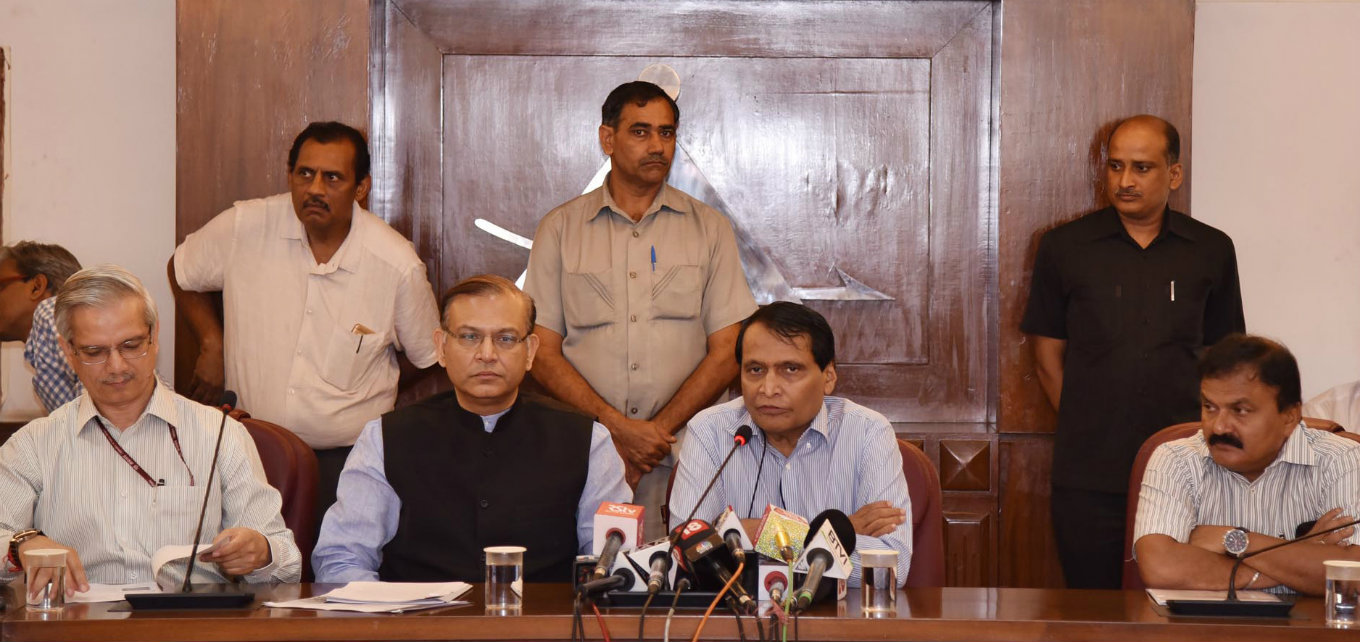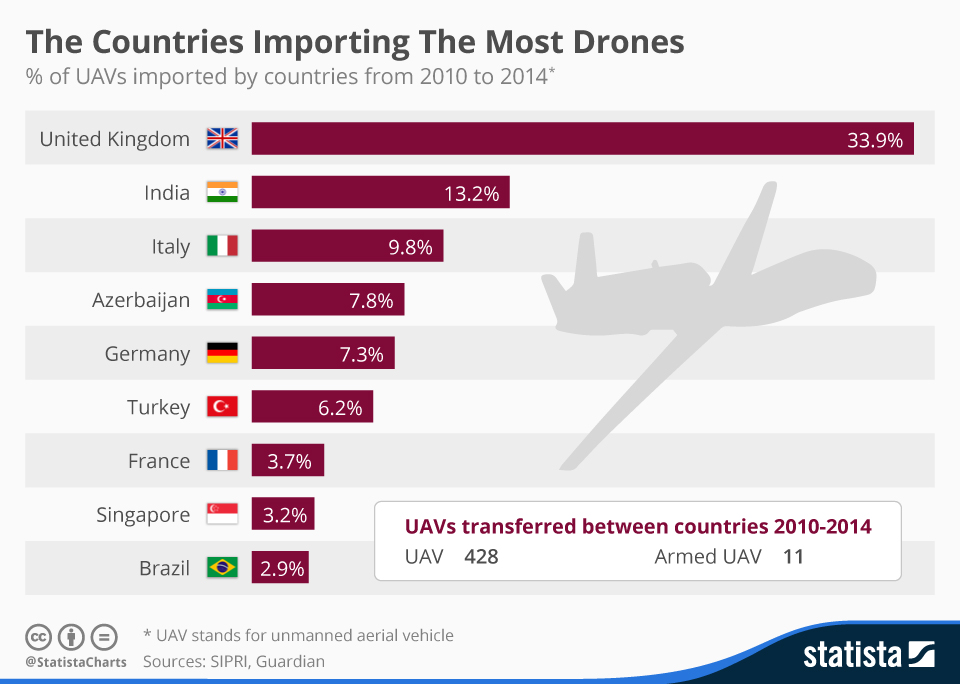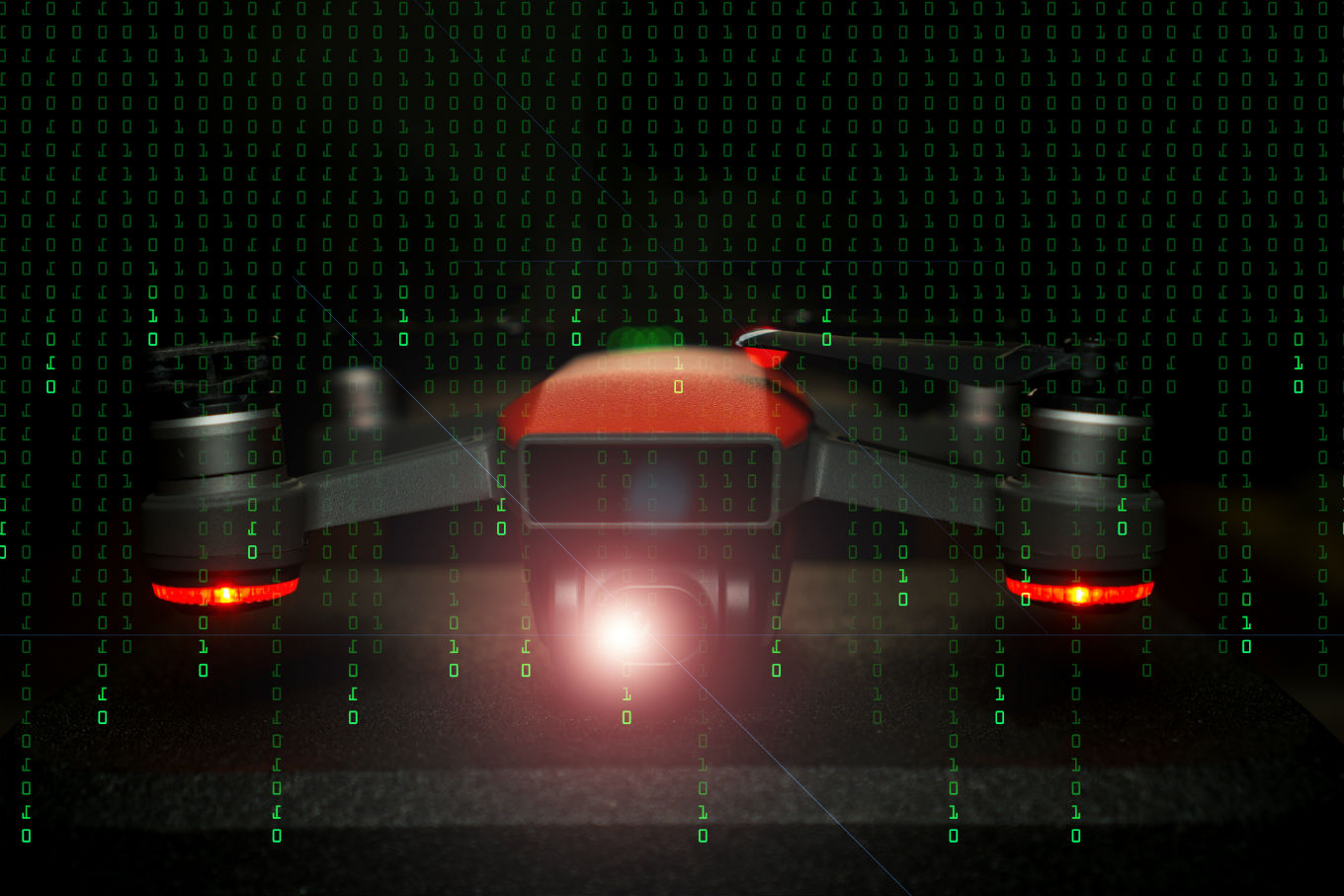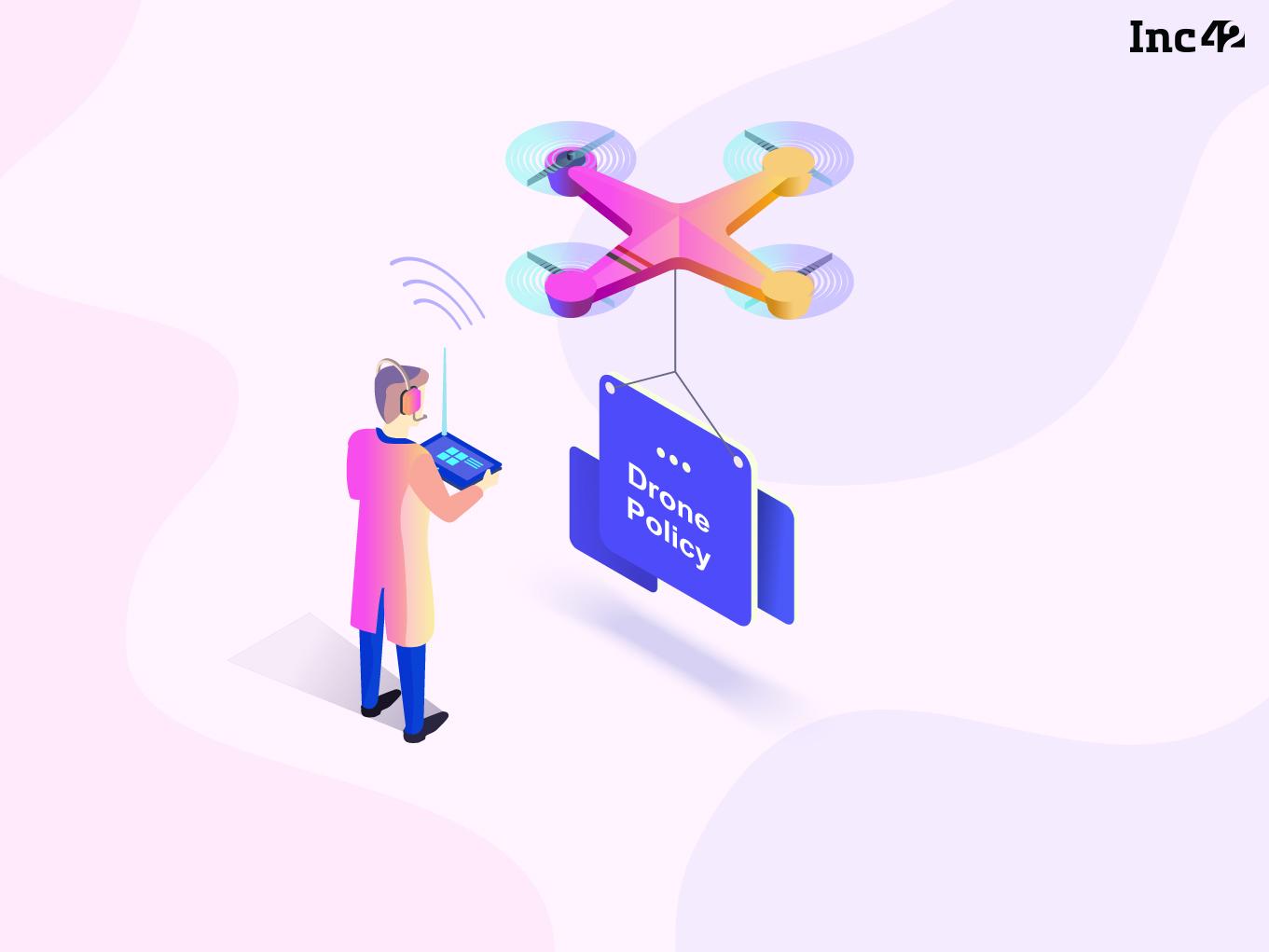• The Drone Regulations 1.0 legitimise drone operation for civil purposes, quashing the DGCA infamous circular from 2015
• The Drone Regulations 1.0 envisage a digital sky platform for the operation of the drones
• A task force under the chairmanship of minister of state, civil aviation Jayant Sinha, will further draft recommendations for Drone Regulation 2.0
For a few years now, drones owned by Amazon, Domino’s, and other companies have been zipping across the skies in the US, the UK, Australia and other countries, delivering everything from pizzas to medical supplies. In India, however, the Director General of Civil Aviation (DGCA), which controls the Indian drones or unmanned aerial vehicles (UAVs) ecosystem, was dragging its feet on the commercial use of drones, creating an air pocket in the path of drone development in the country.
Finally, drone enthusiasts and technology companies can put their arms up in the air and rejoice — a drone policy called Drone Regulations 1.0 is here now, paving the way for building an unmanned air traffic control system for operation of drones or unmanned aerial vehicles (UAVs) in the low-altitude airspace.

Launching the new policy and guidelines, Suresh Prabhu, Minister of Commerce & Industry and Civil Aviation, announced, “These regulations will enable the safe, commercial usage of drones starting December 1, 2018. It is intended to enable visual line-of-sight, daytime-only operations to a maximum altitude of 400 feet.”
Until now, drones have been banned by the DGCA) for civil purposes — only defence forces, law-enforcement agencies, and a few select government companies were allowed to use them. But UAVs have slowly and surreptitiously made their way into mainstream activities such as videography and photography, agriculture, wildlife surveillance, monitoring of railway tracks.

Ironically, for a country with a drone ban in place, the bulk of the 40,000-odd drones in Indian skies are civil ones and Indians are estimated to have spent INR 40 Cr in buying drones. Also, with 22.5% of the world’s UAV imports between 1985 and 2014, India ranked first among drone-importing nations.
Clearly, Indians love their UAVs.
In the wake of the release of the Drone Regulations 1.0, Inc42 spoke to several stakeholders in the Indian drone market, who have largely welcomed the policy as it makes way for the commercialisation of certain drones for civil purposes. Drone manufacturers and service providers, however, view the policy as just a stepping stone and feel much more needs to be done in order to promote drone manufacturing in India and to bring it out from their limited presence in surveys, pilot projects, and surveillance to a fully commercial scale that enables door-to-door delivery of goods such as food and groceries.
The Drone Regulations 1.0 ban the doorstep delivery of goods and food in India. But more about that later.
Winnie Shekhar, Partner, Indus Law, told Inc42, “The regulation is a welcome treat. The government has finally taken some steps to make sure that the technology, which has been used in our country for long now, is now at least out of the grey area. Now, you now know that there is a procedure and clearance that can be inbuilt.”
However, while legitimising operations of drones with a limited franchise, the policy neglects a number of issues that Indian drone manufacturers have been facing while competing with Chinese drones in the Indian market.
Karan Kamdar, founder and CEO of 1 Martian Way Corp, an AI startup manufacturing software and embedded AI products for drones, and President of the Indian Drone Racing League (IDRL), says, “There is nothing in the current policy that will disallow foreign players. But, it does say that every drone that is legally allowed to fly in the Indian space needs to be registered with the DGCA and will have to go through the whole digital sky platform.”
This means that the hardware players, whoever they are, will have to incorporate some add-on features in order to be compliant with the new guidelines. According to the policy, every drone will generate some cryptographic signal based on its Unique Identification Number (UIN), which will be matched by the digital sky platform.
However, Kamdar adds, “That is kind of encouraging to the local players because we (Indians) will be the ones who will design the sky platform. And, as per the Regulations 1.0, drones will be operated by local players only, hence it does provide a better opportunity to local companies.”
Drone Regulations 1.0: Founding A Digital Sky Platform

According to the Drone Regulations 1.0, the Digital Sky Platform will be the first-of-its-kind national unmanned traffic management (UTM) platform that implements a “no permission, no takeoff” (NPNT) rule. Users will be required to do a one-time registration of their drones, pilots, and owners.
Drone operations in India will thus be enabled through the Digital Sky Platform. There will be different colour zones visible to the applicant while applying on the Digital Sky Platform — Red Zone: flying not permitted, Yellow Zone (controlled airspace): permission required before flying, and Green Zone (uncontrolled airspace): automatic permission.
Speaking to Inc42, A Pragadish Santhosh, founder of Indian drone startup Aero360, welcomed the move and says, “When they (the DGCA) were working on the Digital Sky Platform, I was also associated with the development as a user. Yes, as far as getting clearances are concerned, there remain certain issues to be resolved. However, it (the drone policy) has smoothened the process.”
He explained, “Earlier, getting clearance from a local authority or police station was quite a big headache as they had no clue about drones. However, now, if I will go to a local authority (district administration) or the police station, there will be clarity and they will be bound to follow the regulations.”
The regulations also divide drones, (also called remotely piloted aircraft system, RPAS), into five categories depending on their weight.
- Nano: Below 250gm
- Micro: 250gm to 2kg
- Small: 2kg to 25kg
- Medium: 25kg to 150kg
- Large: > 150kg
Except for nano drones, which don’t need permission to fly, for all other drone flights, users will be required to seek permission on a mobile app and an automated process will permit or deny the request instantly. To prevent unauthorised flights and to ensure public safety, any drone without a digital permit will simply not be able to take off as the Digital Sky Platform mathches the UIN of the drone. Also, the UTM will operate as a traffic regulator in the drone airspace and coordinate closely with defence and civilian air traffic controllers (ATCs) to ensure that drones remain on approved flight paths.
Drone Regulations 1.0: Are They Regressively Progressive?
The Drone Regulations 1.0 have not only ignored a number of issues that have been a point of concern for quite some time now in the country but has also added some bizarre conditions that will hinder the flight of drone in India while wanting to give them clear skies to operate it.
Kamdar says, “The drone policy is on the progressive side, compared to what we had in 2016 — a total legal ban. If you look at the US, Australian, and Chinese policies, the Australian policy is apparently the most progressive one, which is why Google and other companies are mostly testing their drones in Australia.”
The Policy Favours Indian Operators But Not Indian Manufacturers
Speaking of the intent behind drones regulations, Prabhu states, “The drone market in India holds the potential of hitting over $1 Tn. We plan to develop drone manufacturing not only for the domestic market but abroad as well.”
However, the big question is, does it really favour Indian drone manufacturers?
The Indian drone market is largely dominated by Chinese drone manufacturers. More than 90% of the drones currently being sold in India are imported from China either in parts or fully operational. Given that India does not produce many of the essential UAV parts such as semiconductor chips and batteries, Indian manufacturers make drones on a very small scale compared to Chinese players such as SZ DJI Technology (the largest drone manufacturer in the world), finding it hard to compete with the Chinese without any favouring policy in place.
The regulations, under the ‘No permission, no take off’ rule, allows only Indian operators and citizens to operate drones in India. However, “There is no strong inclination or favour towards desi players. Certain provisions, such as having sim card slots and radio frequency identification (RFID) tags, have also been included in this particular DGCA recommendation. Chinese companies’ drones don’t have any such provisions as of now. But, as soon as the regulations come into place, they might add these as well,” says Santhosh.
All drones except nano ones and those owned by the National Technical Research Organisation (NTRO), the ARC, and central intelligence agencies, are to be registered and issued UINs.
Also, an Unmanned Aircraft Operator Permit (UAOP) will be required for drone operators except for nano drones operating below 50 ft, micro RPAS operating below 200 ft, and those owned by the NTRO, the ARC, and intelligence agencies.
Santhosh, who is in talks with three-four Indian Railways Zones for the supply and service of drones, states, “Chinese drones are way cheaper than Indian ones. Most Chinese drones fall in the micro category of 250gm to 2kg. And, if you are flying below 60 metres, you won’t need any permission. You just need to inform the local authority and you can do it.”
For instance, he says, “Right now, the Indian Railways requirements are mostly for drones that fly below the 60 metres. This means that Chinese drones can directly apply for these tenders. One only needs to get the UIN. However, it does not require the operator permit — UAOP.”
The Drone Regulations 1.0 lack detailing about public tenders and manufacturing policy that could have bent the way for Indian manufacturers.
Does The Drone Policy Address Surveillance And Data Privacy Issues?

Kamdar says that the policy does not mention surveillance and data privacy issues. The Regulations 1.0 are largely governed by the weight categories, the height of drones, and whether they are to be operated in daytime or not. That’s about it.
The guidelines, however, make it mandatory for UIN-required drones to have a flight controller with flight data logging capability along with RFID tagging and SIM card provisions.
Shekhar explained, “The most important part here is that Indian investment is a must in a drone. The regulation says that your drone will get a UIN only if you are ‘Indian-owned’ and ‘Indian-controlled’ in all possible ways.”
She adds, “That was one of the issues we faced with a lot of our clients. Most of the new-age companies working in drone technologies are venture-funded ones. The FDI policy has no such restriction, but the drone policy does. So, Chinese players laying their hands on Indian data is not going to happen.”
Further, once the draft Personal Data Protection Bill 2018 gets implemented, it will make it mandatory for drone operators to store the data locally.
However, data captured by drones could also lead to one’s address mapping, real time tracking, face recognition and more. And, the government is yet to define the criticality of drone-captured data.
Why Is Age-Limit Required For Indoor Operations?
One of the bizarre things about the Drone Regulation 1.0 is that it has made a UAOP essential for certain kinds of drones (as per the criteria mentioned earlier). Also, to get UAOP, the applicant has to be a minimum of 18 years of age.
Kamdar states, “There is no age limit in the US. India is perhaps the only country where the age limit of minimum 18 years has been implemented. The bigger issue is that even if you’re flying indoor drones, which is completely your space, you need to meet the age limit.”
No Drones In The Night
Interestingly, the Drone Regulations 1.0 disallow flying of drones in the night. But, if a drone operator is dealing with security and surveillance matters, certain drones need to be operated in the nighttime as well, says Kamdar.
“Also, in the case of drone racing category, we do a lot of night racing,” adds Kamdar, who also happens to be the president of Indian Drone Racing League.
Drone Regulations 1.0: A Perfect Take-Off
While announcing Drone Regulations 1.0, Prabhu also announced that going forward, the Drone Task Force, under the chairmanship of minister of state Jayant Sinha, will provide draft recommendations for the Drone Regulations 2.0.
According to the DGCA press statement, the Drone Regulations 2.0 will examine the following issues:
- Certification of safe and controlled operation of drone hardware and software
- Airspace management through automated operations linked into overall airspace management framework
- Beyond visual-line-of-sight operations
- Contribution to establishing global standards
- Suggestions for modifications of existing CARs and/or new CARs
“We want to establish a world-leading drone ecosystem. These regulations firmly place us among the global leaders. Our policy roadmap will certainly provide a strong impetus to all players in the drone ecosystem. We hope that these initiatives will enable us to create a vibrant new industry,” says Sinha.
Shekhar says, “Based on the inputs from the Indian drone ecosystem stakeholders, the task force will make further recommendations. As of today, it is the same old authorities who will be providing the clearance and assurances.”
The limitations of Drone Regulations 1.0 are understandable, as there is no air traffic management system at low altitude in place as of now so the monitoring and control of commercial drones can’t be allowed at large scale. This is why delivery of goods and food has not been permitted under Drone Regulations 1.0.
However, the Regulations 1.0 are a take-off in the right direction. Once the Digital Sky Platform is in place and fully functional, it will lay down a roadmap for the full commercialisation of drones which permits goods and food delivery and allow the UAV industry in India to spread it wings far and wide.
































 Ad-lite browsing experience
Ad-lite browsing experience